Life, Death, & The Sefirot: FFVII’s History & Remake’s Future in a New Symbol of Reunion
by X-SOLDIER June 29, 2020 0 commentsIntroduction to Final Fantasy VII’s Symbols
During the pre-menu opening credits prelude cinematic in Final Fantasy VII, there’s an abstract symbol with seven strokes – thus having a “VII” in the middle of the words, “Final Fantasy” that differs from the main logo of Meteor between the words “Final Fantasy VII” where the 7 is already shown. It’s the Final Fantasy VII symbol which we’ve always used here on The Lifestream, since we’ve felt it wasn’t widely used, and was broadly representative of the original game & everything connected to it. I was reminded of that symbol while playing through Remake, upon seeing a few extremely brief glimpses of something that had been painted on the backs of the Sephiroth copies’ cloaks. Since the original game’s black-cloaked men looked far more like Remake‘s new ghostly “arbiters of fate” – the Whispers, I wondered if there might be any existing connections that would provide a clue to why this strange new symbol suddenly appeared inside the game world itself on these very story-centric, but otherwise generic, minor characters.
Since Final Fantasy X‘s Shinra character from Spira is shown in the Shinra HQ, it initially seemed like that might give a way for a symbol that resembled the logo of the Zanarkand Abes to be found & adopted inside Remake’s game world. While the symbol that we see on the Sephiroth copies’ backs in Remake does have a passing resemblance to that Spiran symbol … it isn’t nearly as similar upon a closer inspection to draw that connection. It was actually a relief that something so deeply connected to Sephiroth & Reunion wasn’t just an obscure easter egg to another game, though. Undeterred, I kept poking around through various other corners of the Internet to see if there were any official mentions of the original symbol’s origins that I hadn’t been aware of – but didn’t find anything.
Personally, I’ve always felt that it was an abstract visual representation of Midgar drawn symmetrically in seven parts, since Midgar was one of the earliest concepts in Final Fantasy VII‘s development. Others have seen it as interlinked 7’s or F’s, or potentially even a stylized version of a Sefirot – but while there are ten Sefirot, I’m not going to be diving deeper into any potential VII & X connections today. The speculation about the Sefirot gave me somewhere to start digging at the new symbol given its connections to Sephiroth. By looking at it as a stylized Sefirot, this gave me an interesting path to follow that yielded some neat connections. So, I planned out writing a little article about the basic Kabbalist religious concepts, just enough to clearly provide a loose speculation associated with it in Remake.
However … in the process of digging into those details and looking back at the original game, that search pulled me into a couple of odd & unexpected places, which in turn yielded far more numerous, interesting & nuanced details about the original game than I had ever expected to encounter. In turn, this significantly impacted what I was able to bring to the table in terms of examining this new symbol in Remake, how it’s used, why it’s there, and even what things it represents.
In order to do that, I’m going be covering the pop-culture & religious inspirations that influenced the original game, and how those tie in to its use of the Kabbalist Sefirot. It’s important to note that we’re not taking a super deep dive into the actual mythologies or beliefs here. Rather, we’re taking a very detailed look at how those concepts would come about to a Japanese audience around the 1970s, and then how they were interpreted by a Japanese developer in 1997 as a source of inspiration for a unique fantasy game world’s setting & story framework. This will let us dive into that specific blend of symbolic & thematic elements to understand how the Sefirot’s spiritual concepts are specifically used in the original game (and a tiny bit in the Compilation). All of this which will finally allow us to examine how those parts of the original game are represented in Remake, as well as understand why certain themes have been expanded upon. Then, we can see what this new Sefirot symbol maps to thematically in regards to Remake‘s story, characters, & themes – as well as understand why that’s being done.
Spoilers for absolutely everything Final Fantasy VII, Compilation of FFVII, & Remake from here on out!
Quick Navigation Index:
- Introduction to Final Fantasy VII’s Symbols (the page you’re reading right now)
- Japan’s Cultural Perspectives & Media in the 1970’s
- Starman & Cult Sci-Fi – Inspirations for Final Fantasy VII
- Sephiroth & the Sefirot within the Original Game
- Additional Key Religious Terminology & Parallels in FFVII
- Remake’s New Symbol, Reunion, & The Sefirot
- Sefirot Path Analysis: I-IV – The Past
- Sefirot Path Analysis: V – Sephiroth
- Sefirot Path Analysis: VI – Tifa
- Sefirot Path Analysis: VII – Cloud & Aerith
- Remake‘s Reunion & Making Promised Land(s)
Onward to: Japan’s Cultural Perspectives & Media in the 1970’s

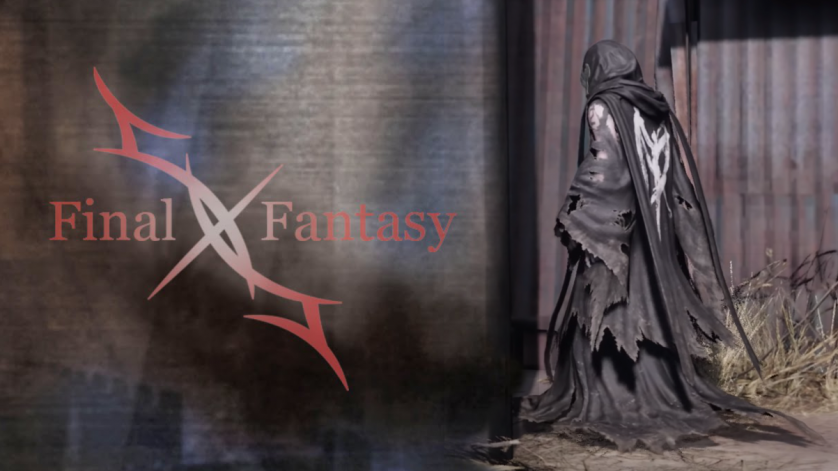
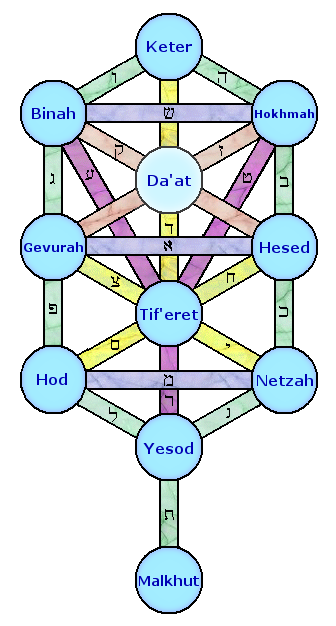
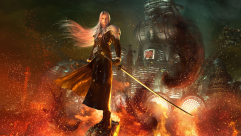
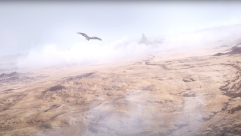
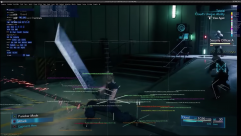

No comments yet
Log in or Register
This is absolutely incredible and I’m sharing it everywhere. Great work X- Soldier.
I’m really glad that you appreciated it, and thanks much for sharing it as well, Schrodingersbabyseal! Hope ya have a good weekend!
Very impressive article as alwyas X-Soldier. Tbh, I still don’t like the whole concept of fate and the meta elements for how overbearing they are. The whispers, specifically, are insanely invasive and not subtle at all. Nonetheless, this was a very interesting read and I especially enjoyed your interpretation of the perspectives of Cloud, Aerith and Sephiroth for the upcoming parts.
Thanks much, X7Strife. Honestly, I felt exactly the same way about them at first, but the more time I’ve spent looking at them, thinking about the original game, and considering what Remake means to the team who’s actually doing it, the more I’ve come to really appreciate what they mean to the story itself. They feel more valuable and less like some slapped on addition to make things new like they did at first.
Fate seems like an odd thing to examine at first, but when you’re talking about life & death… it’s an even more odd thing to ignore. It’s invasive because that’s what it’d be like going back & reliving events you want to change with your whole being, but not being able to. I can’t guarantee that they’ll nail the execution once it’s all said & done, but at this point I feel very confident in what they’re presenting with them & why.
Personally, I’ve found that it’s best not to think of the Whispers as being purely meta concepts – even though they do also serve that purpose in Remake. It helps a lot to view them just like the Planet’s other existing spiritual defense mechanisms like the Weapons & Materia. In the original game they would have been completely invisible to us, since that game just follows the Sefirot’s paths, rather than knowing things about the paths in order to try deviating from them. Everything about what they are matches with the original game in their overt physical presentation, as Final Fantasy VII has never been subtle with the presentation its spiritual concepts once you know what you’re looking at, which is what I wanted to do a lot of in this article.
There’re actually a lot of ways that the Whispers have already been adhering to the in-world mechanics with the the Planet & Shinra’s Science experiments, too. Despite being new and feeling a bit strange, they’re still perfectly aligned with spiritual core of Final Fantasy VII, as well as a lot of the in-game lore as well. I briefly mentioned some of that on Page 7 (in the bit about Stroke II) that I’ve been planning on breaking those things down in a future article, and this is all sort of why I wanted to cover these things first before poking around at some things about the Whispers from a purely in-game-world perspective.
I hope that whenever I get to dive into a bit more detail on them from that perspective that maybe that’ll help ya find them a bit more appealing & less invasive. Either way, I’m glad that you found some things to enjoy from all of this despite not being to hot on the Whispers! Have a good week!
Thank you for this thoroughly researched article!
I’d seen the joke(?) before that David Bowie is in every video game, but this really spells it out as far as Sephiroth. I could never quite get into Bowie’s art rock but now I want to see “The Man Who Fell to Earth”!
I wonder if Seph’s silhouette (fashion-wise) was also inspired by Bowie’s dress + boots for the cover of “The Man Who Sold the World”?
Glad to’ve provided it!
I saw a lot of those while I was doing research, and it was amusing that I was adding yet another example to that list. “The Man Who Fell to Earth” is quite an abstract Sci-Fi film and there’s a ton of nudity in it, but it’s SO very interesting looking at it as something with links to the themes in Final Fantasy VII.
I think that Sakaguchi had some input about Sephiroth’s & Aerith’s designs (they have similar hair because they were initially going to be siblings in the game), but I wouldn’t be too surprised if there were even more Bowie influences than I managed to pick up. 😀
I have to be honest: I did cry in the end.
I’m very sorry for your loss, but knowing that this is what ultimately allowed you to understand more deeply the authors’ intentions and feelings about where they want us to go in the game is inspiring to me. Making us reflect on life, death and our memories, once again, would be the greatest gift they could give us. I really hope you’re right.
It’s amazing what you’ve managed to do. Thank you.
That means a lot to me, so thanks so very much for taking the time to let me know. I did cry several times over the course of doing research & writing this. Additionally, I just learned over the weekend that another friend of mine passed away unexpectedly – and having just written all of this really helped me a lot in processing that, too. I’m working on a semi-companion piece to this one that covers some different but related topics, so I’m hoping it’ll be just as insightful.
Again, thanks for reading through this and letting me know, & I hope that you have a really wondering week!
I haven’t even finished reading this and my mind is already blown. I’ve also been reading the unused dialogues from the OG and man does it give a lot of insight into some of the way remake was done. At least in my opinion. FF7 is my favorite game/story of all time and deep diving into understanding it has been a passion since remake was released. Thank you so much for all this research and concise explanation. I wish i had a friend like you to talk to about all this ff7 passionate stuff, no one around me GETS it.
There was an interview with Kitase in Famitsu that got translated today, and it loosely touched on a couple things I mentioned here in ways that were super satisfying.
I’m glad that you’re enjoying it so far & hope that it carries on with you to the end! I’m slowly working on more, so hopefully that’ll help! It’s a passion that I deeply enjoy, so thanks for taking the time to read & provide extra encouragement for doing this sort of thing!
Hello X-SOLDIER!
I finished the original FF VII a couple of days ago and was really impressed by story, characters and themes of the game and I want to understand more. Unfortunately, I can’t play the Remake right now and I wanted to ask if your whole article has Remake spoilers or I can read some early pages. Or maybe there is some other good article with in-depth analysis of the original game?
Heya literious! I’d very much recommend steering clear of this one for now. There are definitely little bits and pieces of Remake-related information scattered throughout, since the symbol that it’s focused on only appears in Remake.
Really glad that you finished the original though, and you’re more than welcome ta join us on the forums to chat about things there!
In some translations Netzah is pronounced more like Netzach…which would be interesting, since Netzah is broken off from the tree. Remake could be attempting to reestablish his presence.
Just amazing, i’m looking forward for your next analysis!
You bring so much to fans of ffvii like me
thanks and thanks again